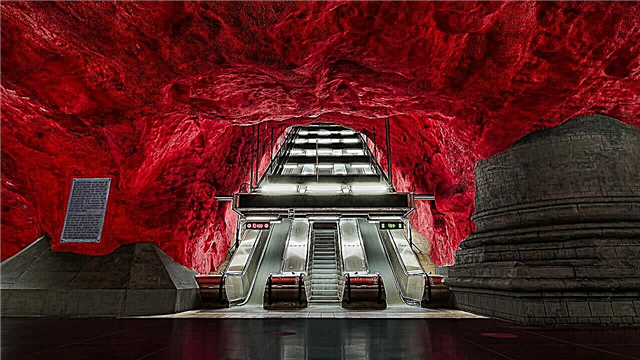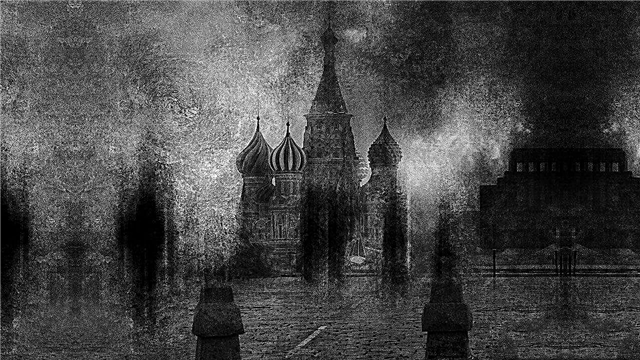Elements seek to erase humanity from the face of the Earth. It is this impression that can be drawn from the report of the UN Office for Disaster Reduction. Over the past couple of decades, material damage from natural disasters increased by 151%. Killed more than 1.3 million people.
Earthquakes and major tsunamis caused by them are responsible for at least half of these deaths. And we will tell you about the biggest tsunami in the last 10 years.
Tsunamis form when huge masses of water move. Most often this happens during earthquakes, but volcanic eruptions, landslides or even underwater explosions can also serve as a cause.
In the ocean, giant waves sweep with a stunning speed, approximately equal to the speed of a passenger plane (800 km / h). Of course, speed drops when the mass of water comes closer to a solid surface. But it is still enough that a huge wave literally washed away everything from the surface - including living beings.
10. Samoa, 2009.
 The death toll: 113 people.
The death toll: 113 people.
One of the most powerful tsunamis occurred in the Samoan region on September 29, 2009. At about 6:40 a.m. local time, an earthquake with a magnitude of 8.1 points occurred at a depth of 33 km. Water has set in motion. It took her only about 8 minutes to reach the islands.
Then waves six meters high hit the coast. Despite the fact that scientists managed to notify people in advance of the impending disaster, one of the largest tsunamis of the 21st century destroyed several coastal settlements and tourist resorts.
9. Chile, 2010
 Victims: 525 people.
Victims: 525 people.
On the night of February 27, an earthquake of 8.8 points occurred in the coastal regions of the country. The earth shook for only three minutes, but the consequences were felt on the entire coast right up to neighboring Argentina and Peru.
Caused by the earthquake, a terrible tsunami swept along the coast, destroying several Chilean cities and killing 525 people. However, the elements did not stop there - the waves reached the San Diego area in California, causing, however, minor damage, and even to the coast of Japan. There, the water, which had almost lost its energy, nevertheless managed to damage several fishing vessels, causing damage of $ 66.7 million.
8. Sumatra, Indonesia, 2010.
 Losses: 435 people.
Losses: 435 people.
The Mentawai tsunami is responsible for seismic activity on the border of the collision of the Sunda tectonic plate with the Australian. This area has always been unstable.
So, 9 years ago, on October 25, an earthquake at the junction of two plates caused a major tsunami. All the anger of the elements took on a group of islands of the Indonesian archipelago called Mentawai. At a height of three meters, the waves hit the ground, destroying 20 settlements. The death toll amounted to 435 people, another 110 were missing.
7. Japan, 2011
 The death toll: 15 896 people
The death toll: 15 896 people
On March 11, a 9-magnitude earthquake triggered a devastating tsunami that swept across the northeast coast of Japan. Giant waves 10 meters high literally devastated the coastal areas of the island state. According to official data, 15,896 people died, and 2,536 people went missing. The highest waves were observed on the island of Miyako. According to eyewitnesses, they were 40.5 meters high.
A man-made disaster also added a man-made disaster - the largest scale tsunami in modern history provoked a nuclear explosion at the Fukushima nuclear power plant. Residents within a radius of 20 km from the station had to be evacuated. This great tsunami has become the most powerful in the history of Japan, and one of the most destructive in the history of mankind.
6. Solomon Islands, 2013
 Victims: not.
Victims: not.
The Solomon Islands are unique in that they have special seismic activity. An earthquake there can cause not only a shift of the Australian and Pacific plates relative to each other, but also the so-called “aftershock” - when a single earthquake triggers a series of earthquakes weaker.
It is doubtful that this uniqueness would greatly delight the inhabitants of the islands when on February 6, at the junction of the plates, another earthquake with a power of 8 points occurred. Although the tsunami caused by it was not very large (the waves barely exceeded one and a half meters high), many settlements on the coastline were destroyed long before the water hit them.
Fortunately, there were no casualties, since the advance warning population went to high areas. However, four villages were destroyed. As a result of the earthquake that followed, 13 people were killed and 6 were missing.
5. Chile, 2015.
 Losses: 15 people.
Losses: 15 people.
Only five years passed after the Chilean earthquake in 2010, and now the wrath of the elements hit Chile again. An earthquake with a magnitude of 8.3 points occurred 46 km from the coast, causing a series of tremors from 6.2 to 7 points.
And after a few minutes, waves 4.5 meters high swept along the coast, destroying everything in its path. At least 500 buildings were affected. In total, as a result of the earthquake and the powerful tsunami, 15 people died, 6 went missing, 90 thousand citizens lost their electricity, and 9 thousand of them were left without a roof over their heads.
4. New Zealand, 2016.
 The death toll: not.
The death toll: not.
Even prosperous New Zealand suffers from time to time from earthquakes and the tsunami caused by them. The largest of them occurred on November 14, when the mountainous regions of the country felt tremors with a capacity of 7.8 points. Ruptures of rocks went from a point at a depth of 15 km, and the rate of crack development reached 2 km per second.
The distance over which the faults spread exceeded 200 km. By the number of faults, the New Zealand earthquake is considered the strongest.
Such power could not but cause a huge tsunami - the waves reached a height of almost 7 meters. Fortunately, no one was hurt - the waves fell on the north side of the Pigeon Bay, in which there was exactly one building - a rest house, which was empty at that time.
3. Greenland, 2017
 Victims: 4 people.
Victims: 4 people.
But this big tsunami is not caused by an earthquake. A giant landslide with a width of about 300 m and a length of one kilometer fell from a height of 1 km into the Karrat fjord in Western Greenland.
A rising wave struck the Eskimo settlement of Nuugaatsiak, which killed four, injured nine people, and water destroyed 11 buildings. Giant waves reached a height of 90 meters. Presumably, this is the highest tsunami in history. Tremors are to blame for the collapse of the landslide.
2. Sulawesi, Indonesia, 2018.
 Losses: 4340 people.
Losses: 4340 people.
Indonesia again suffered from one of the worst tsunamis in the world. A strong earthquake occurred on the Minahasa Peninsula on September 28. The power of the tremors reached 7.5 meters.
The shaking, in turn, triggered a chain reaction of weaker earthquakes. As a result, a huge mass of water fell on the local regional center of Palu, sweeping away everything in its path. The waves were 4 to 7 meters high.
But even they were not so terrible as the liquefaction of soil caused by water flows in the area of the city and its environs. The resulting mudflows began to flood what had not yet been torn down by water. Hundreds of people died, even more disappeared. The earthquake and tsunami killed 4,340 people.
This is the biggest disaster in Indonesia over the past 12 years after the infamous disaster of 2006, during which nearly 6 thousand people died.
1. Java and Sumatra, Indonesia, 2018.
 The death toll: 426 people.
The death toll: 426 people.
The biggest tsunami of the decade most recently hit the long-suffering archipelago. At 9 pm local time, the Anak Krakatau volcano erupted. The eruption was so powerful that part of the island on which the volcano stood (or which the volcano was) collapsed into the sea. At least 64 hectares of soil were in the water, and the height of the volcano decreased from 338 to 110 meters.
Such a mass, suddenly submerged in the sea, could not but cause waves. Within half an hour after the eruption, the most dangerous tsunami hit the west coast of the country. More than 300 kilometers of coastline suffered, waves reaching 2 to 13 meters in height. 426 were killed, more than 7 thousand were injured, and 24 people were missing.












